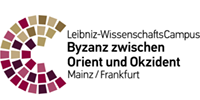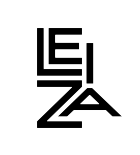The Depiction of Men as Warriors in 14th-Century Sources - Mühldorf and Other Examples
The preservation of important events in written form is an inherent need in human culture. In medieval times, authors focused especially on war and violent conflicts. While telling the story of wars and battles, authors did not mention every detail of the conflict. This would be impossible due to too many events taking place at the same time and the multiple different actions of various fighters. Instead of giving a complete overview of events taking place, the authors focused on certain persons and their activities. On many occasions, the focus was on men which were depicted as fighters or even heroes and not on common foot soldiers or supply chains.
This emphasis was used by writers to arrange their story or chronicle in a certain way, to create temporal and causal correlations between events and to make their story more interesting for their intended target audience. Therefore, one can see the descriptions of battles in sources like chronicles as narrations which were constructed by the authors to contain certain messages and to convey them to an audience.In my thesis ‘Kämpfer auf dem Schlachtfeld – Kämpfer in den Texten’ I will analyse the depiction of men as fighters in written sources from the 14th century which depict the battles at Morgarten (1315), Mühldorf (1322) and Sempach (1389).
For this purpose, I will use some methods from narratological theories and consider different levels of meaning. Aside from including the point of view of the different authors and their audience, I will also use categories such as ‘individual fighter’ or ‘combatants operating in groups’ to be able to analyse the different narrations about fighters. Besides that, landscape and sounds, such as direct speech or noise during the fights will play an important role as well. Are only the victorious fighters the ones having a voice in the sources? How does the landscape help to create certain images of the combatants? What role does the location of the battlefield in the texts play and do they differ per author?
For answering these questions, it is important to consider the messages the authors wanted to create, their personal background as well as the historical context of the battles, the participating people and the distance between an event and its textualization.The selected battles are ideal to answer all those questions because the existing sources provide the perspective of both the winning and the forfeiting parties. This makes it possible to analyse the different intentions of the writers and to compare their different depictions of men as fighters.
Supervision:
Univ.-Prof. Dr. Johannes Pahlitzsch
Sponsorship:
DFG (RTG 2304)
Publications
- Helen Wiedmaier, Kämpfer auf dem Schlachtfeld – Kämpfer in den Texten. Schlachtenschilderungen in den historiografischen Quellen des 14. und beginnenden 15. Jahrhunderts. Byzanz und die euromediterranen Kriegskulturen 3 (Mainz 2024).








![[Translate to Englisch:] [Translate to Englisch:]](/fileadmin/_processed_/f/f/csm_Schlachtfeld_Wiedmaier_a44191d8a5.jpg)




